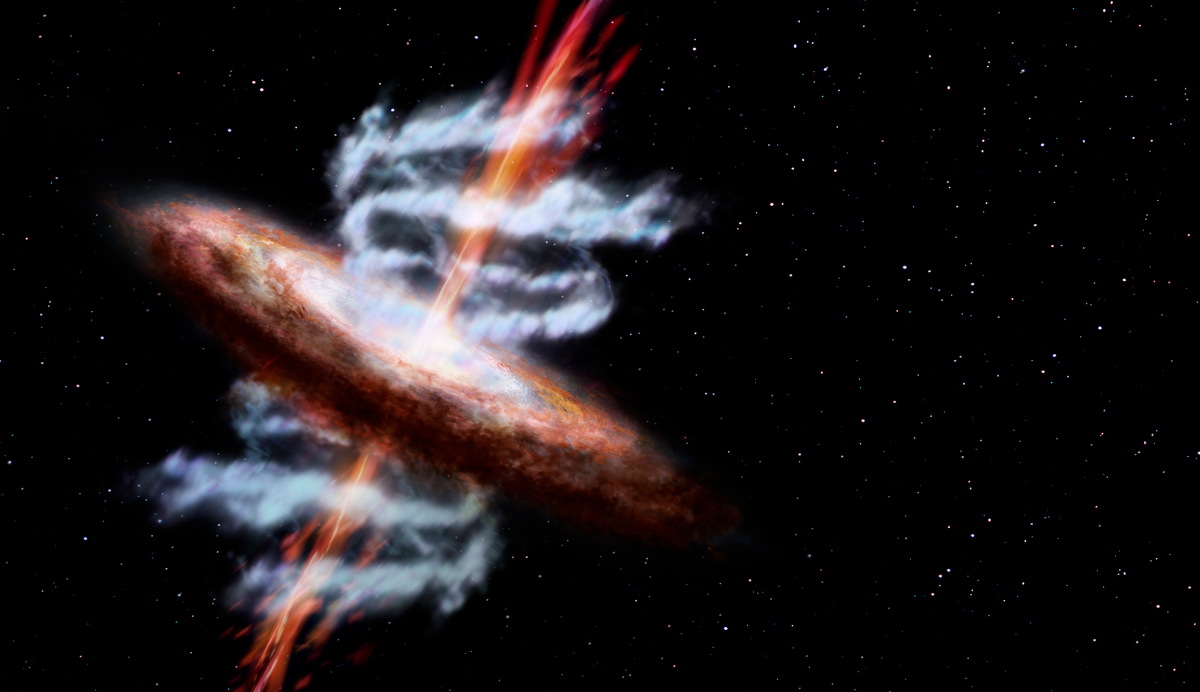
Europe's next large-scale space mission will study supermassive black holes, gamma-ray bursts and other aspects of the high-energy universe.
The European Space Agency (ESA) has selected the Athena X-ray observatory as its second "large-class" science mission. Athena — which will cost about 1 billion euros ($1.36 billion at current exchange rates) — is scheduled to blast off in 2028.
The mission will address two main questions, ESA officials said: 1) How does "normal" (i.e., not dark) matter come together to form the universe's large-scale structure; and 2) How do black holes grow and shape their surroundings?
"Athena will be a state-of-the-art observatory that will provide a significant leap forward in scientific capabilities compared with previous X-ray missions, and will address fundamental open questions in astrophysics," Alvaro Giménez, ESA's director of Science and Robotic Exploration, said in a statement late last month.
Athena, whose name is short for "Advanced Telescope for High-Energy Astrophysics," will be the largest X-ray telescope ever built, featuring a 10-foot-wide (3 meters) X-ray mirror along with an array of scientific instruments, researchers said.
The spacecraft will observe radiation emitted by material about to be swallowed by supermassive black holes, which lurk at the heart of most, if not all, galaxies. Athena will also measure how fast these black holes are spinning, ESA officials said.

In addition, the telescope will shed light on a number of other astronomical phenomonena, from faraway gamma-ray bursts to the super-energetic auroras that dance in Jupiter's thick atmosphere, researchers said.
Get the Space.com Newsletter
Breaking space news, the latest updates on rocket launches, skywatching events and more!
The telescope will launch to the Earth-sun lagrange point 2 (L2), a gravitationally stable spot in space about 930,000 miles (1.5 million kilometers) from Earth. A number of other ESA spacecraft have also gone to L2, including Planck, which is studying the radiation left over from the Big Bang, and Gaia, which is mapping 1 billion Milky Way stars with high precision.
Athena is the second large-scale space mission chosen by ESA under its "Cosmic Vision 2015–25" plan. The first was the Jupiter Icy Moon Explorer (JUICE), whose selection was announced in May 2012. The JUICE spacecraft is scheduled to launch in 2022, on a mission to study the huge Jupiter moons Callisto, Ganymede and Europa.
Follow Mike Wall on Twitter @michaeldwall and Google+. Follow us @Spacedotcom, Facebook or Google+. Originally published on Space.com.
Join our Space Forums to keep talking space on the latest missions, night sky and more! And if you have a news tip, correction or comment, let us know at: community@space.com.

Michael Wall is a Senior Space Writer with Space.com and joined the team in 2010. He primarily covers exoplanets, spaceflight and military space, but has been known to dabble in the space art beat. His book about the search for alien life, "Out There," was published on Nov. 13, 2018. Before becoming a science writer, Michael worked as a herpetologist and wildlife biologist. He has a Ph.D. in evolutionary biology from the University of Sydney, Australia, a bachelor's degree from the University of Arizona, and a graduate certificate in science writing from the University of California, Santa Cruz. To find out what his latest project is, you can follow Michael on Twitter.









